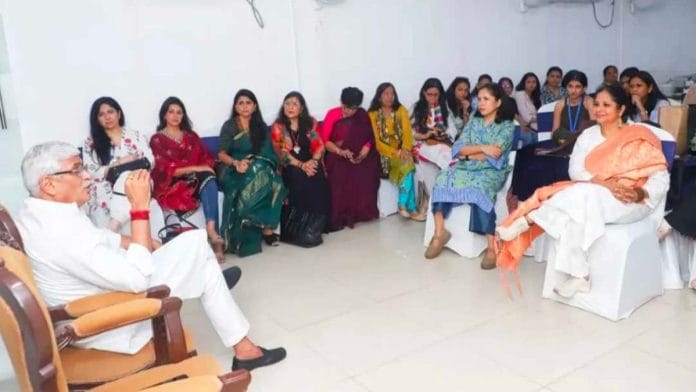New Delhi: There is a surge in the tourism sector, and it is almost entirely driven by domestic tourists, said Union Tourism Minister Gajendra Singh Shekhawat on Wednesday. A big part of this pie is temple tourism.
“Domestic pilgrim tourism is rising not just because of new temple corridors that we have built,” Shekhawat said at an interaction organised by the Women Journalist Welfare Trust in New Delhi. “It is because of overall economic growth and disposable income in the hands of the poor.”
Tourism sector analysts have said that the hype and emphasis on domestic tourism have clouded the slowdown in foreign tourist arrivals in India. Some countries around the world have managed to rebound to pre-Covid level of inbound tourist traffic. But Shekhawat dismissed that as an invalid comparison.
“Some tourism sites like Bali, Baku—popular destinations in Asia Pacific and central Asia—had a lower floor earlier, in terms of arrivals. That has grown in recent years, and it just makes it look like the tourism in other countries has grown exponentially compared to India,” Shekhawat said. “So it looks like they are doing better than us.”
The pressure, however, is in budget hotel facilities, he said. High-end foreign tourists are still coming, but it is the tourists who are looking for mid-range budget travel that are feeling the pinch, he explained.
“Many of these accommodations are booked because of domestic travel. Foreigners are not finding space because Indian travellers have booked them. We have to boost this capacity,” Shekhawat said. “The number of foreign tourist arrivals may look lower, but in terms of the number of days of stay, we are second only to the US. People visit India for a longer duration.”
He also said that in the next five years, India will see a big push to boost sports infrastructure, which will also augment travel. Today, tourism contributes over 13 per cent to India’s total employment, next only to agriculture. The sector contributes 5 per cent to the overall economy.
In the past decade, pollution and women’s safety problems have soiled India’s image as a welcoming destination for foreign tourists.
Shekhawat said pollution is mostly a New Delhi problem, and it doesn’t affect popular destinations such as Agra or Jaipur.
He remarked that narratives around women’s safety are often amplified by the country’s own media and public conversations. He highlighted the advisories given to tourists who visit Italy and of shooting incidents in the US.
“We have formed the perception because we keep debating these incidents. One incident occurs, and TV channels go on and on. We are to blame. Nobody talks about problems in other countries as much,” he said.
Pahalgam tourism
Four months after the terror attack in Kashmir’s Pahalgam, Shekhawat expressed optimism about how tourism has already rebounded in the state.
“I visited Pahalgam. It has 18,000 rooms and not a single one was vacant in July,” Shekhawat said. “We are not worried about foreign tourists going to Kashmir. As long as Indian tourists keep going there, we are happy.”
He also shared that incentives have been given to bloggers and influencers to boost and promote the Indian tourism sector.
Speaking about the impact of climate change and tourist rush in the Himalayas, he spoke of the new training program called ‘Paryatan Mitra’ (friend of tourism), which aims to create ambassadors for sustainable practices among tourists.
Also read: Investment, not donation, is needed for a beggar-free India—panellists at Delhi book launch
‘Yuge Yugeen Bharat’
As part of the new Central Vista plans, the National Museum will now be reimagined as the new ‘Yuge Yugeen Bharat’ National Museum. A new way of curation is underway in the museum, Shekhawat said.
“In Indian museums, we now want a different kind of sequencing. Earlier objects were categorised by eras. The Harappa, the Gupta period, pre-Medieval, Medieval colonial, etc,” he said. “Now we will have galleries like the history of Indian architecture, the history of Indian crafts, and so on.”
(Edited by Prasanna Bachchhav)






